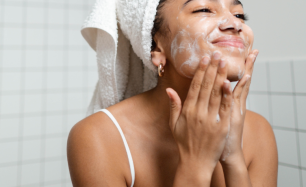The Importance of Patch Testing New Skincare Products
Trying new skincare products can be exciting, but it’s essential to ensure they are safe for your skin before fully incorporating them into your routine. Patch testing is a simple yet crucial step that can help prevent irritation, allergic reactions, and long-term skin damage. Here’s why patch testing is important and how to do it properly.

Why Patch Testing Matters
Many skincare products contain active ingredients, preservatives, and fragrances that may not be compatible with all skin types. A patch test allows you to observe how your skin reacts to a product before applying it to your entire face.
Helps Identify Breakouts – Some skincare ingredients may be comedogenic, meaning they can clog pores and cause breakouts. Patch testing can reveal whether a product contributes to acne or excessive oiliness.
Prevents Allergic Reactions – Some ingredients, such as fragrances, essential oils, and preservatives, can trigger allergic reactions. A patch test helps identify potential allergens before widespread use.
Reduces Risk of Irritation – Even if a product is formulated for sensitive skin, individual sensitivities vary. Testing a small area ensures you won’t experience redness, itching, or burning after full application.
Protects Against Long-Term Damage – Harsh reactions can lead to prolonged inflammation, hyperpigmentation, or compromised skin barriers. Testing first minimizes these risks.
How to Patch Test a Skincare Product
To conduct a patch test effectively, follow these simple steps:
Gradual Introduction – Even after passing the patch test, introduce the product slowly into your routine to ensure compatibility with other skincare ingredients.
Choose the Testing Area – Apply the product to a discreet yet sensitive area, such as behind the ear or on the inner forearm.
Apply a Small Amount – Use a pea-sized amount to observe how your skin responds.
Wait 24-48 Hours – Leave the product on and monitor for any redness, swelling, itching, or discomfort.
Check for Reactions – If irritation occurs, discontinue use. If there are no adverse effects, the product is likely safe for full-face application.

When to Patch Test
Patch testing is recommended whenever you try a new product, especially if it contains active ingredients like retinoids, exfoliating acids, or strong botanical extracts. It’s also essential when switching to a new brand or formulation, as minor changes in ingredients can still trigger a reaction.
Final Thoughts
Although patch testing takes a little extra time, it is a simple precaution that can prevent serious skin issues. By incorporating this step into your skincare routine, you can confidently explore new products while protecting your skin’s health. Always prioritize your skin’s well-being and listen to how it reacts before making a new product a permanent part of your regimen.





